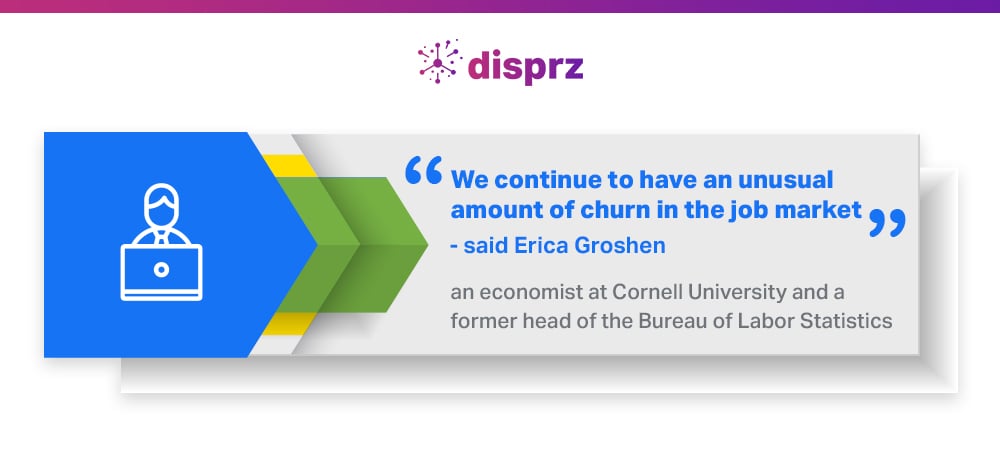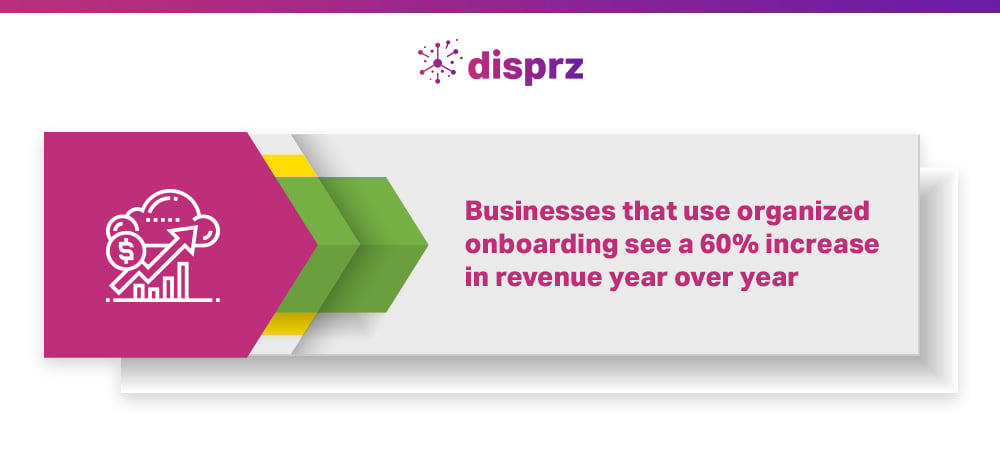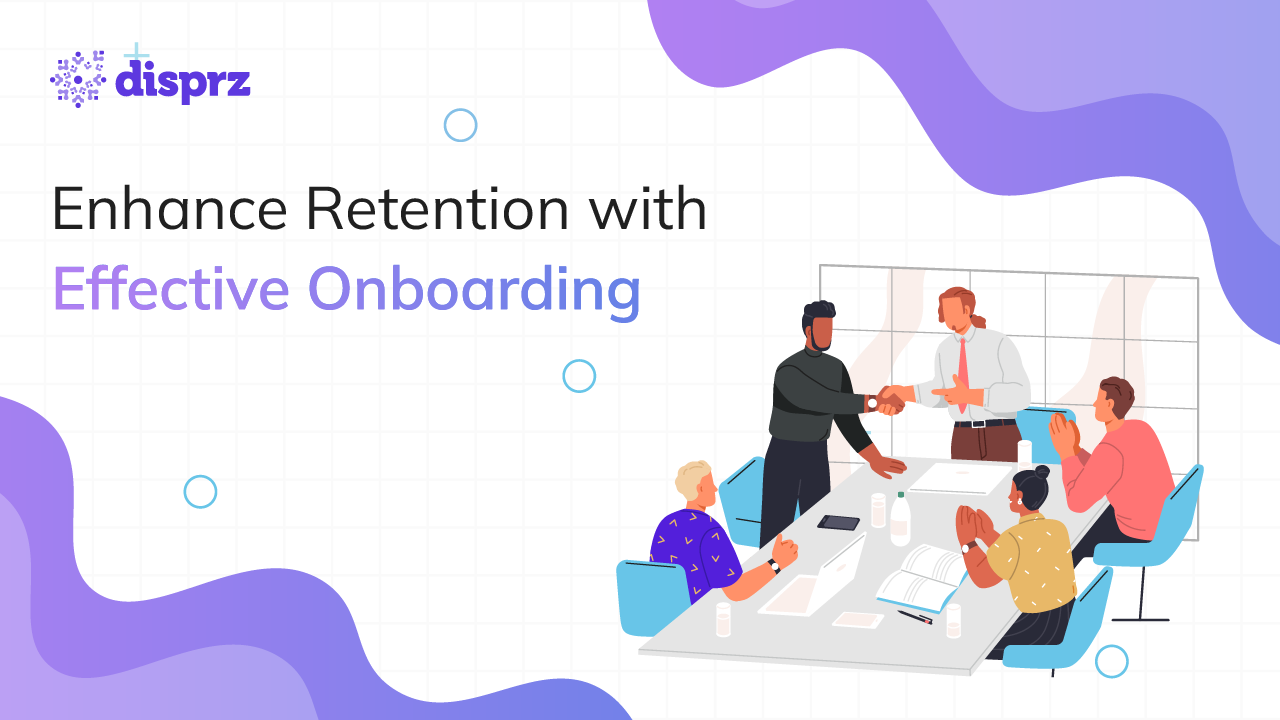An effective onboarding experience can win loyalty and improve employee retention. However, if it is ineffective or not provided at all, it can lead to devastating effects on the business.
For instance, a restaurant is registered on Uber Eats. The restaurant hires a new frontline employee and asks him to manage the app on his second day. A customer places an order. The frontline employee accidentally cancels the employee due to a lack of upfront training. You can imagine the bad impression that this leaves on the employee. The restaurant just lost a loyal customer due to poor frontline employee onboarding.
If the new hire had provided proper frontline onboarding, the customer would have had a different experience. Such incidents affect the performance review of the employees. The employees feel demotivated and ultimately quit.
As per research, 4.4 million Americans quit their jobs in April this year.

Frontline employee attrition: A big issue that’s getting bigger
The average retail employee turnover rate in the United States currently sits at around 60%. Be it Retail, Hotel, or any other industry, the attrition rate is surging dramatically.
Josh Bersin, a global industry analyst says the cost of losing an employee can range from tens of thousands of dollars to 1.5-2X the employee’s annual salary.
With inflation at an all-time high, it is challenging to invest time, money, and resources in going through the entire hiring process again. Hence, it is pivotal to retain the new hire by planning a successful onboarding process.
Challenges in Frontline Onboarding
Why is onboarding frontline staff more challenging than on-site or remote workers?
Work Location
The scattered structure of the frontline workforce poses the primary challenge for HR departments in designing a streamlined onboarding process. Consequently, they heavily depend on unit managers to conduct onboarding efficiently.
Manager Variability
Frontline sites depend too much on management teams, making individual managers critical for onboarding. An HBR study found that over half of them are in their first year of leadership, possibly affecting their ability to onboard effectively.
Fast-Paced Environment
In fast-paced sectors like hospitality, high turnover, and seasonality lead to a continuous influx of new staff. Consequently, onboarding often receives inadequate attention, being hastily shortened to expedite productivity.
Inadequate Tools
Frontline employees often receive just a back-of-house (BOH) computer for onboarding, which usually entails watching training videos, taking tests, and signing agreements. While meeting legal obligations, this falls short of fully integrating employees into the organization's culture, values, and goals.

How to Provide an Effective Frontline Onboarding Experience to Improve Employee Retention
Employee onboarding is a smart step towards decreasing time to productivity and increasing retention of frontline employees. A great employee onboarding experience can help you increase employee retention by 82%.
The initial days after hiring are crucial in any company. Instead of just focusing on completing paperwork, it is pivotal to engage the distributed workforce.
Providing the right knowledge transfer and delivering on-demand learning at scale can help get the new frontline employees up to speed quickly. A well-planned onboarding process helps the distributed workforce understand their role, the company’s goals, and the employer’s expectations better. Mapping a clear pathway through a structured onboarding experience can simplify the new hire’s journey in the company and prepare them for success.
The new hire onboarding experience can be broken into four phases: Pre-onboarding, Induction, Training, and Development.
1) Engage new hires before they join the company
There are around 10.4 million unfilled jobs in the United States, which poses more challenges for the recovering economy.
The frontline labor shortage has struck fierce competition in the job market.
The period from signing an offer to joining a company is critical. The employees have numerous options amidst the war for talent. Hence through pre-onboarding, it is crucial to capture attention, earn loyalty, and build company/employee relationships.
You can start engaging employees even before they receive their official mail. Send key onboarding documents and resources in their emails to acquaint the new hires with the company culture.
Through pre-onboarding it is important to convey what your business offers and how is it aligned with the new candidates’ career aspirations. The efforts you put in initially to prepare an employee to perform in a new environment can reap fruitful results in the long run.
2) Start frontline onboarding on day 1
The first day can be overwhelming without a proper new employee induction. Hence roll out the metaphorical red carpet and welcome your new employees with an induction kit. It doesn’t necessarily need to be a stack of papers. Leverage technology to offer a digital induction experience.
The induction kit should consist of :
-
Employment contract and company policies
-
Company’s vision, mission, and values
-
Welcome message from the CEO
-
Introduction to managers and colleagues
-
job description such as title, roles, and responsibilities
-
Safety protocols to be followed
3) Focus on training in the first month
Learning must be integrated into the employees’ flow of work in the first month to drive expected performance. With bite-sized content, you can effortlessly train your new frontline employees to manage their daily tasks efficiently. The more knowledge they have about the job roles, various functions, and customer pain points, the better they can contribute to the success of the company.
Through micro-learning on mobile, employees can easily access onboarding programs and learn at any hour. For instance, a food delivery associate has arrived at the restaurant and is waiting to pick up the order so he can make the most of this idle time through mobile learning.
4) Provide development opportunities to promote internal mobility
The onboarding experience doesn’t end once you transform a promising candidate into an efficient contributor to the team. It is important to have regular check-ins and analyze the on-the-job performance of the employees to understand their capabilities and skills gaps. Once you start seeing potential, it is crucial to provide the right learning opportunities to take up new roles and responsibilities for moving up the career ladder.
Leverage a frontline training and enablement solution to improve the onboarding experience for your distributed workforce
The entire onboarding experience can be structured using a frontline training and enablement solution. Everything from onboarding a new hire to taking them to the next level can be streamlined in the FLE solution. It enables you to create an automated workflow that seamlessly blends with the employee’s flow of work.
Rather than overloading your employees with information, you can structure your onboarding through a drip journey. The drip journey can have a microlearning module to drive engagement. For instance, using the Disprz FLE solution, you can create an onboarding drip journey of 15 to 30 days or more covering short videos, mini-blogs, flashcards, and objective quizzes to assess the knowledge. Moreover, an FLE gives you insights into a learner’s progress to take real-time action.
See a preview to find out how an FLE solution can help you in onboarding and empower your frontline employees.








